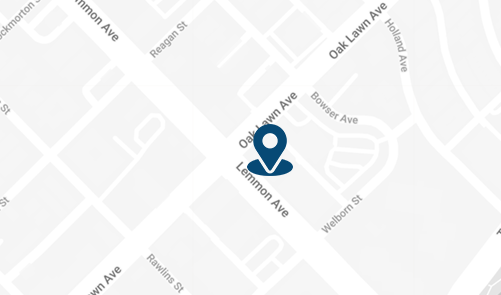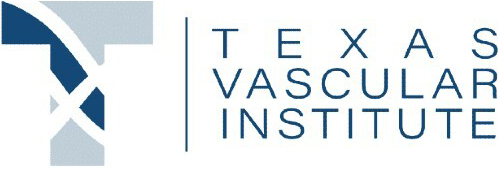By: Dr. Dev Batra | 01.30.23

Treatments that close down varicose veins can sometimes help venous leg ulcers heal. Dr. Dev Batra describes the experiences of one of his patients that was living with a venous leg ulcer, and how he used a vein closure procedure to help heal her ulcer.
Venous leg ulcers are the most severe manifestation of chronic venous disease. We recently cared for a 50 year old patient with an open leg ulcer that had been living with severe cramping, pain, and heaviness in both of her legs for nearly 10 years. This is not uncommon – unfortunately, individuals affected by vein problems tend to live with ulcers or other debilitating symptoms of chronic venous disease for several years before finding their way to an effective treatment strategy.
For this patient (and several others with venous leg ulcers), we were able to dramatically improve the health of her legs with modern vein treatment and coordinated care with a wound specialist.
Living With A Venous Leg Ulcer
Individuals with more severe stages of chronic venous disease battle a number of symptoms that can make their daily lives difficult. Our patient’s symptoms worsened significantly when standing for long periods of time, which was especially challenging because her work required her to be on her feet for long periods of time. She was frequently unable to finish a day’s work because of the severe pain and swelling in her legs.
Her active ulcer had been present in the gaiter region of her left leg for 4 months and her right leg had undergone pigmentation changes. She had previously experienced ulceration closer to her foot that had healed some time prior to her visit to Texas Vascular Institute. We suspect that a new ulcer had formed because her underlying vein disease had not been addressed.
An ultrasound exam revealed that our patient had clinically significant reflux in her common femoral, greater saphenous vein (GSV), and small saphenous vein (SSV) in both of her legs. She also had many tributaries (branching varicose veins) off of her GSVs and SSVs. These ultrasound results confirmed that our patient was affected by C6 chronic venous disease in her left leg and C4A disease in her right leg according to the CEAP classification system.
Treatment of Venous Leg Ulcers With Thermal Vein Closure
Given the extent of our patient’s vein disease, we opted to treat the GSV and SSV in both of her legs with radiofrequency ablation, followed by foam sclerotherapy to take care of the tributaries – effectively shutting down all of her diseased veins. Following treatment, the patient’s symptoms of swelling, heaviness, and pain dramatically improved. Her ulcer healed, and her skin color returned to a normal tone with some visual artifacts of the previous ulceration. Our patient has since reported that she is now able to work pain free and her quality of life has majorly improved.
Our patient before (left) and after (right) vein treatment for her venous leg ulcer.
This is not an exceptional case by any means. In our previous article, we provided an in-depth review of the clinical studies that have demonstrated the impact of radiofrequency ablation in the healing of venous leg ulcers and the prevention of ulcer recurrence. Vein treatment is certainly a more proactive approach than the conservative management techniques of traditional wound care, but proactive patients may find that their leg ulcers are directly caused by very treatable vein disease.

About the Author
Dr. Dev Batra, M.D. is a vein specialist and founding partner of Texas Vascular Institute. Holding board certifications in radiology and vascular & interventional radiology, he is well-versed in vein issues and has been voted one of D-Magazine’s best doctors in Dallas for three years running.
This blog post was written with research and editorial assistance from OnChart™.
Medical Disclaimer
The Materials available in the Texas Vascular Institute blog are for informational and educational purposes only and are not a substitute for the professional judgment of a healthcare professional in diagnosing and treating patients.
Read more blogs
Varicose Veins in Hurst: Expert Care at Your Doorstep
At Texas Vascular Institute (TVI), we empathize with the discomfort and worry caused by varicose veins. That's why we're here in Hurst, providing cutting-edge treatments that are customized to address your unique needs. With our team of experts wielding extensive knowledge and experience, we promise to provide the utmost care in a warm and compassionate atmosphere. Let us help you find relief and regain your confidence!
Varicose Veins in Dallas: Quality Care You Can Trust
Our exceptional team of vascular specialists are true leaders in their field, armed with years of invaluable experience. Harnessing the power of cutting-edge advancements in vein treatment, they've transformed the lives of numerous patients, liberating them from the pain and unsightly burden of varicose veins. When you choose TVI, you're opting for unparalleled care and unwavering commitment to your varicose vein needs in Dallas.
How to Get Rid of Varicose Veins in Hurst?
The causes and risk factors of varicose veins vary from genetics to age, pregnancy, obesity, and prolonged standing or sitting, among other factors. Some typical signs and possible issues include discomfort, inflammation, irritation, hemorrhage, dermatological alterations, sores, and thrombosis. You may want to seek medical attention if you experience any of the following symptoms or complications.
WHAT OUR PATIENTS
have to say
Texas Vascular Institute always appreciates feedback from our valued patients. To date, we’re thrilled to have collected 378 reviews with an average rating of 5 out of 5 stars. Please read what others are saying about Texas Vascular Institute below, and as always, we would love to collect your feedback.
Leave a Review
Amazing Practice
I'm very particular with my Healthcare and tend to be cautious with referrals to specialists. This office is amazing from the first point of contact. Their staff are friendly, professional and highly knowledgeable. Then the Dr is just as amazing as his staff, absolutely brilliant. Office manager Jessica has this office running like a well oiled machine and does so with a smile, an air of confidence, kindness and professionalism. Love this practice!!
- Richard G.

Beyond Thankful
Dr Batra and his staff are amazing! We are so grateful to have found him. Everyone is so kind and so caring and Dr Batra explains everything so well and does procedures with excellence. Beyond thankful to be under their care!!!
- Bitsy P.

Gold Standard
This is a gold standard for how a medical practice should be run. I was promptly seen at my scheduled time, my ultrasound was thorough and I received plenty of attention and care from the staff and Dr.Batra.
- Weronika L.
INSURANCE
We accept most major insurance plans. Please contact the medical office for all insurance related questions.









3500 Oak Lawn Ave, #760
Dallas, TX 75219
For Appointments: 972-798-4710
General Inquiries: 972-646-8346

809 West Harwood Rd, Suite 101,
Hurst, TX 76054
For Appointments: 972-798-4710
General Inquiries: 972-646-8346

